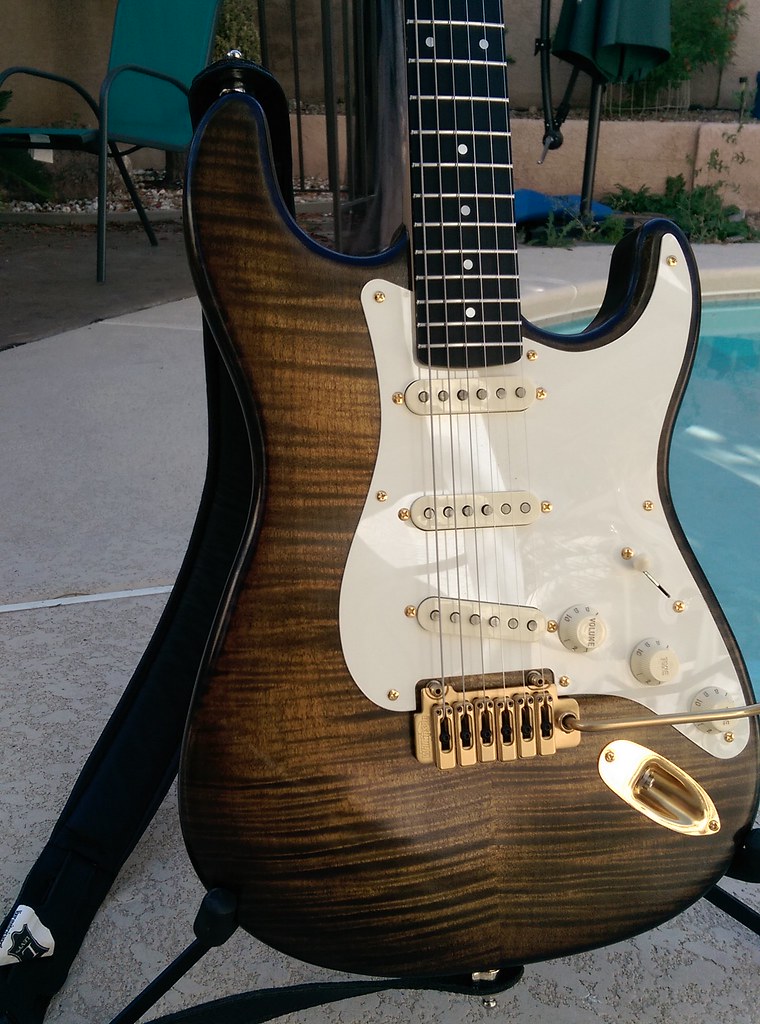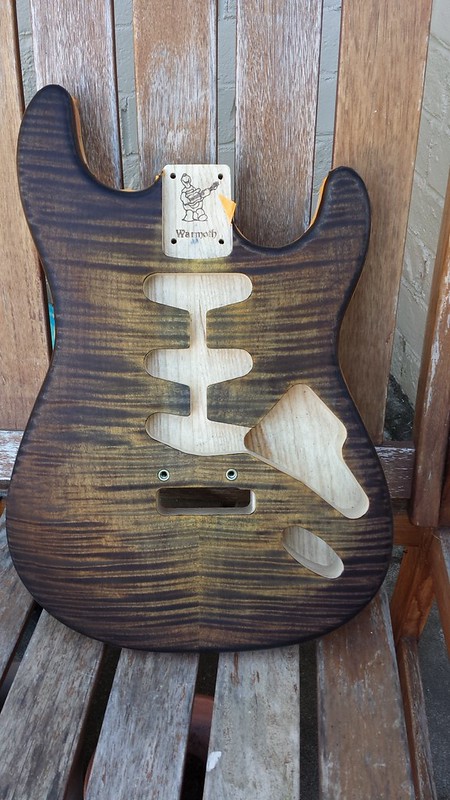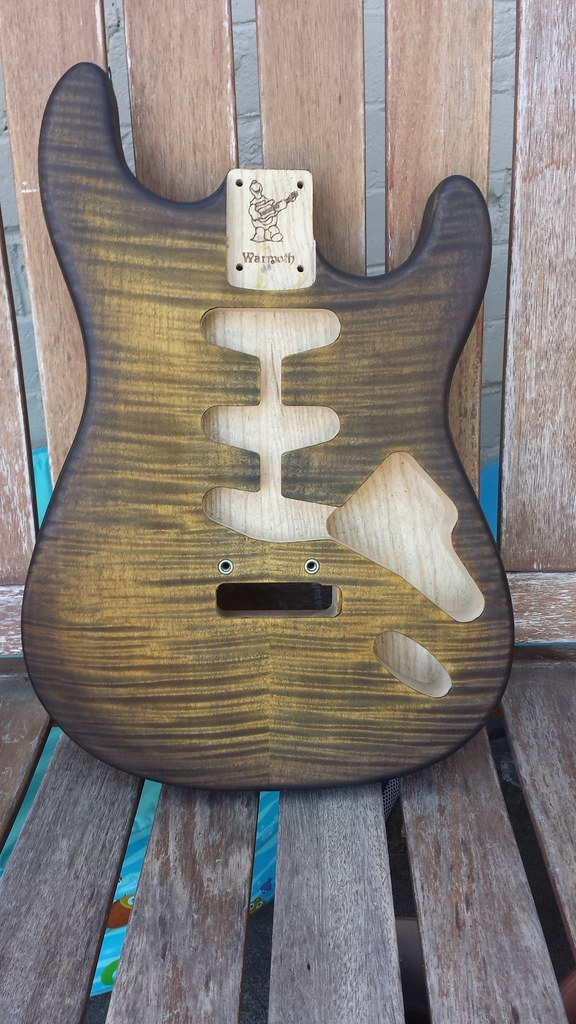I think it's time for an update!
So the body and neck are both french polished to a reasonable gloss, so the next step was to do some assembly work on the guitar. I wanted to get everything done that could potentially scratch the finish before doing my final few glaze coats of shellac to bring out the mirror gloss finish. This included sanding the contours onto the bottom of the pickup rings (sandpaper face-up on the top), making a template of the pot holes to do the wiring, and sealing the end grain in all of the holes (pots, switch, pickups, tuners, etc.). For the sealing I used a tiny paint brush with shellac. One coat wicks into the end grain and seals things up to prevent issues if moisture were to ever infiltrate these holes and swell the wood.
I made a template out of thin plywood and wired up the volume and tone pots. I used Stew-Mac's Emerson pots for the volumes, and standard CTS pots for the tones. All 500K audio taper. The caps are Mallory, including two 0.001µF caps wired in series with 150k resistors for treble bleed circuits. I used a bus bar for the ground, something that I haven't done before. I think it'll help when wiring up the shielded pickup wire as the grounds can go to the bus bar instead of the pot backs.

Next is one of the most fun parts of the build...the final gloss! I did some "glaze coats" on the body with extra thin shellac, then hit the surface with some Novus #2 polish to bring things to a mirror finish. I'm immensely proud of how this came out, it's my best french polishing job so far by far:

I am putting off finishing the headstock face until later though, it's really challenging since the clear shellac is over black. Basically any imperfections really show, and the small surface area makes it hard to get a streak-free and contamination-free surface while french polishing. So my strategy is to finish building the guitar and give the shellac a month to cure/harden. Then I'll rub out the surface with fine paper and the polishing compound.
Anyway, now the stressful part...gluing the neck!!! I'm using fish glue from Stew-Mac, as it is supposed to crystalize when it cures just like hide glue for a better sound transfer between the body and neck.
http://www.stewmac.com/Materials_and_Supplies/Glues_and_Adhesives/Glues/Wood_Glues/StewMac_Fish_Glue.html
The advantage over hide glue is that it has a 30-minute working time vs. hide glue's 1 minute. So this provides a whole lot more time to get things clamped properly. Plus if there's an issue I can actually pull the tenon back out and try again without the glue hardening. The downside is a 12-24 hour cure time, not a huge deal.
My time from buying the kit to setting the neck is actually a full 2 years because of delays/life/etc., so it turns out the amazing "suction" fit of the PGK neck joint had actually turned into not fitting at all after I pulled off all of the masking tape. So I lightly sanded the surfaces of the body and neck where they mate. Man this mahogany sure smells nice when sanded! :icon_biggrin:

Next I worked out the clamping cauls, protectors, etc., applied glue to both surfaces, and went for it! I used 2 cam clamps as shown. Before I tightened them down I pushed the neck along its axis into the body as hard as I could to make sure it was seated. The clams provided force against the fretboard but also stopped the neck from sliding back out. In retrospect I probably should have used a giant rubber band or something to continuously push the neck into the body but this worked okay.


It worked! And wow, it instantly feels like a guitar when holding it.

I had a little bit of glue squeeze out that I wasn't able to clean up while gluing because the clamps were in the way. Luckily fish glue cleans up easily with some water. I just needed to wet the surface, wait 10 minutes, then gently scrape off the glue.

















